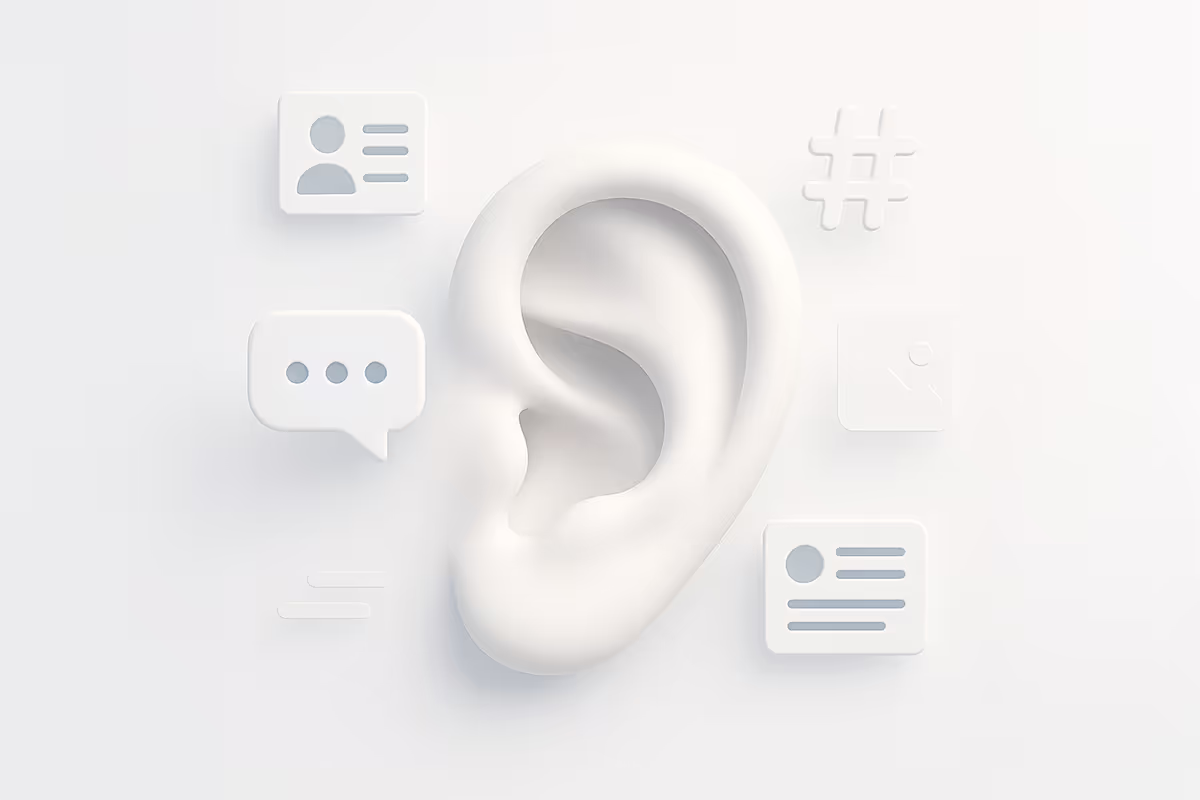Stop Guessing, Start Listening: How Smart Brands Use Social Listening to Drive Engagement

People Are Talking About Your Brand Online — Are You Listening?
Because if you’re not… trust me, your competitors definitely are.
Welcome to the new digital Wild West — a landscape so noisy it makes Times Square look quiet. Consumers aren’t just watching. They’re tweeting, posting, tagging, venting, and reviewing.
And the brands that win? They’re the ones using social listening tools and strategies to keep their ears to the ground and their finger on the pulse.
Let’s get one thing straight: social listening is no longer optional. It’s your early-warning radar, your marketing crystal ball, your real-time focus group that never sleeps.
If your brand is still guessing what customers want instead of actually listening? That’s like trying to drive a Tesla blindfolded.
This article isn’t just about tools or tactics — it’s about a mindset shift. We’ll break down what social listening actually is, spotlight the best social listening platforms, and show how smart brands turn real-time insights into campaigns, communities, and loyalty.
What Is Social Listening (and What It’s Not)
Here’s the deal: social listening is not just social monitoring.
- Social monitoring = reactive. Spotting direct mentions of your brand and replying.
- Social listening = proactive. Analyzing the broader online conversation — including industry trends, competitors, and untagged mentions.
It’s how brands identify customer sentiment, emerging trends, recurring frustrations, and new opportunities.
If social monitoring is checking the weather, social listening is predicting the storm.
Why Social Listening Matters for Business Growth
So why should your brand invest? Because the ROI is massive.
- Crisis management: Detect negative sentiment before it goes viral.
- Product development: Customers are already telling you what features they want.
- Campaign optimization: Track real-time feedback and pivot before campaigns flop.
📊 Stat check: 96% of unhappy customers won’t complain to you directly — but they’ll vent online (Brandwatch). Brands using social listening see a 25% boost in customer retention in 12 months (Forrester).
Even silence speaks volumes. If no one’s talking about your campaign, that’s still insight.
Best Social Listening Tools (By Use Case)
You don’t need a six-figure budget to start. The right social listening platform depends on your goals.
- Hootsuite & Sprout Social → great for monitoring + engagement
- Brandwatch & Talkwalker → advanced analytics + sentiment tracking
- Community-driven platforms (e.g. PlayTV, Parler) → co-creation and real-time feedback loops
Pick tools that fit your team’s needs — not just the trendiest name on LinkedIn.
How to Respond With Authenticity
Most brands mess this up: they listen, collect insights… and reply like robots.
Your brand voice on social media matters. Don’t copy-paste canned lines. Respond like a human.
Bad: “We apologize for the inconvenience. Please DM support.”
Good: “Hey Jake — fair point. We dropped the ball. The team’s fixing it now, update coming today. Thanks for flagging it.”
👉 Pro tip: Not every comment deserves a reply. Trolls bait. Don’t bite.
Proactive Social Engagement Strategies
When you start listening, you don’t just find problems — you find opportunities.
- Trendjacking done right: Join cultural conversations authentically.
- Boost brand advocates: Share user content, shout them out, make them part of the story.
- Turn FAQs into content: If questions repeat, create a TikTok, carousel, or blog answering them.
Social listening fuels content marketing, ad copy, and customer loyalty when done right.
Case Studies: Brands Winning With Social Listening
- Netflix → Witty, human replies that feel personal.
- Nike → Purpose-driven campaigns rooted in customer values.
- Duolingo → Their bold, meme-driven social presence thrives on listening and reading the room.
Great social listening doesn’t just prevent PR disasters — it shapes brand identity.
Common Social Listening Mistakes
Avoid these pitfalls:
- Over-automating responses (kills authenticity)
- Ignoring or deleting negative feedback (screenshots live forever)
- Tracking only your brand name, missing industry conversations
- Collecting insights but never acting on them
That’s not social listening. That’s digital eavesdropping.
How to Measure Social Listening ROI
Yes, it’s measurable. Look at:
- Engagement rate growth
- Sentiment analysis over time
- NPS (Net Promoter Score) improvements
- Response time + escalation speed
- Links to retention, churn, and customer lifetime value
Numbers tell the story — if you’re paying attention.
Quick Takeaways
- Social listening = a strategic growth tool, not just customer service
- Monitoring is reactive, listening is proactive
- Real-time insights fuel smarter campaigns
- Pick the right tool for your business, not the flashiest
- Respond like a human, not a bot
- Listening drives content, retention, and loyalty
- Acting on insights is the real differentiator
Conclusion: Social Listening Is the Future of Brand Engagement
Here’s the truth: attention goes to the brands who pay attention.
Social listening strategies help you cut through noise, earn trust, and build lasting communities. It’s not just tracking conversations — it’s understanding them and turning insights into action.
Whether you’re a startup or a global giant, listening is how you stay relevant, human, and competitive.
Want to grow a brand that actually feels human? Start by listening.
